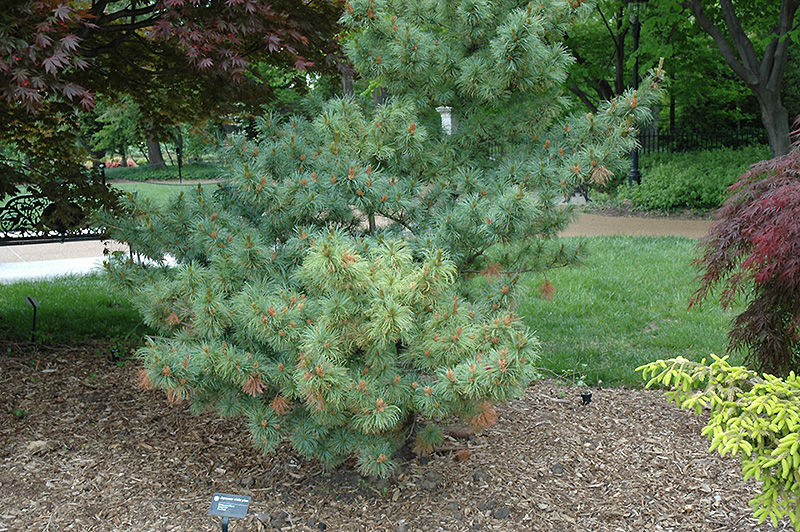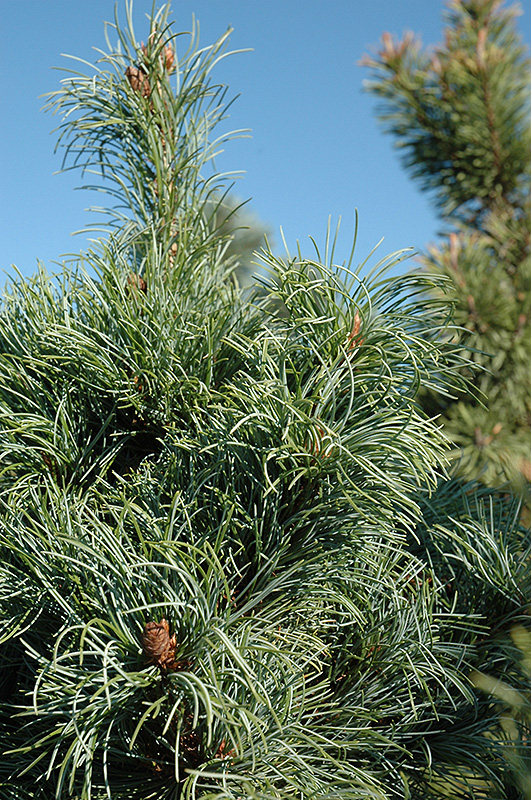Shonnard’s Nursery
Plant Finder Tool
Bergman Japanese White Pine
Pinus parviflora 'Bergmani'
Height: 50 feet
Spread: 50 feet
Sunlight:
![]()
Hardiness Zone: 4b
Description:
A stately conical evergreen that in later years will develop a picturesque form, becoming flat topped with broad upper branches; a showy, attractive tree with blue-green foliage and plenty of cones; salt tolerant and good for costal applications
Ornamental Features
Bergman Japanese White Pine is primarily valued in the landscape for its ornamental globe-shaped form. It has attractive bluish-green evergreen foliage. The twisted needles are highly ornamental and remain bluish-green throughout the winter.
Landscape Attributes
Bergman Japanese White Pine is a dense evergreen tree with a strong central leader and a more or less rounded form. Its relatively fine texture sets it apart from other landscape plants with less refined foliage.
This is a relatively low maintenance tree. When pruning is necessary, it is recommended to only trim back the new growth of the current season, other than to remove any dieback. It has no significant negative characteristics.
Bergman Japanese White Pine is recommended for the following landscape applications;
- Accent
- Shade
Planting & Growing
Bergman Japanese White Pine will grow to be about 50 feet tall at maturity, with a spread of 50 feet. It has a low canopy with a typical clearance of 5 feet from the ground, and should not be planted underneath power lines. It grows at a slow rate, and under ideal conditions can be expected to live to a ripe old age of 120 years or more; think of this as a heritage tree for future generations!
This tree should only be grown in full sunlight. It prefers dry to average moisture levels with very well-drained soil, and will often die in standing water. It is considered to be drought-tolerant, and thus makes an ideal choice for xeriscaping or the moisture-conserving landscape. It is not particular as to soil type or pH, and is able to handle environmental salt. It is somewhat tolerant of urban pollution. This is a selected variety of a species not originally from North America.



